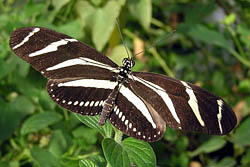Animal Colors That Catch the Eye
These are just a few of the many colors and patterns that animals use to send signals. In some cases colors are used to find the perfect mate. Animals also use colors as warning signals and as camouflage to hide from predators. There are also many cases where scientists do not know exactly how some animals are using their cool colors and patterns.
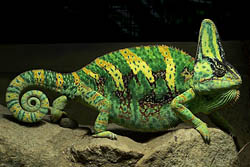 |
 |
| The color-changing kings of the animal kingdom have to be the Chameleons. They can change their colors to look a bit more like their surroundings, which helps them hide and stay safe. But could their color fashion also be sexy? (photo: Kupos) | Ladybeetles are both brightly colored and toxic. These colors are a signal to other animals that says "stay away!" (photo: Calibas) |
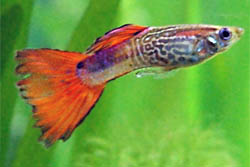 |
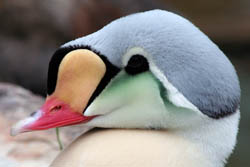 |
| Beautiful scale colors in male guppies are perfect examples of sexual selection - yes, redder is better! (photo: Jdiemer) | While nothing is known about the function of colors in this species of sea duck- the King Eider - it's one of the rare animals to make a green pigment for special coloring purposes. |
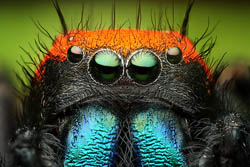 |
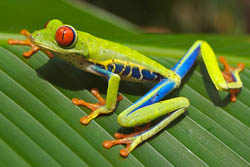 |
| Male jumping spiders are vibrant compared to the dull brown and gray females, but females don't select their mates based on the presence of the color. If the colors are not for females, then why are the males so brightly colored?! (photo: Thomas Shahan) | Quite a set of amazing colors in this red-eyed treefrog and no one really knows why. The red eyes are especially cool to look at, but what are they saying? Could they be telling other tree frogs to stay away? (photo: Carey James Balboa) |
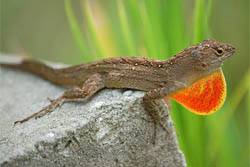 |
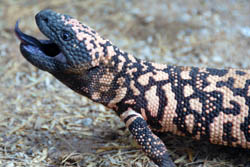 |
| This male anole shows off by literally doing push-ups as he flaunts his throat fan - called a dewlap. The ladies find the combination hard to resist. | Bold black and orange are familiar colors for a venomous animal. The Gila Monster might be signaling to some animals and using it to hide from others. |
|
|
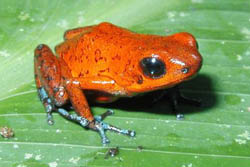 |
| What is a black and white animal doing here? It might seem boring but this pattern developed over time. This tasty butterfly looks a lot like ones that have a terrible taste. This helps to keep birds from making them into a meal. (photo: Adrian Pingstone) | This poison dart frog is an example of color having two purposes. These tiny creatures protect themselves by storing toxins from the food they eat, like ants and mites. Their red color tells predators they are dangerous to eat, but the female frogs also prefer the super red males. (photo: Clinton & Charles Robertson) |
 |
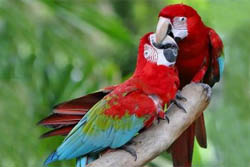 |
| This juvenile eastern newt uses its red-orange color as a warning in the early stage of life when it has to travel out in the open and on land. The bright color is a warning that it is toxic and it helps keep predators away. | Parrots are unusual, in that many members are covered in red with almost no difference between males and females. Are these social birds using red to stand out against their green background so they can be sure to find their flock-mates? |
Read more about: Nature's Colors of Love
Bibliographic details:
- Article: Animal colors and patterns
- Author(s): Dr. Biology
- Publisher: Arizona State University School of Life Sciences Ask A Biologist
- Site name: ASU - Ask A Biologist
- Date published:
- Date accessed:
- Link: https://askabiologist.asu.edu/animal-colors-and-patterns
APA Style
Dr. Biology. (). Animal colors and patterns. ASU - Ask A Biologist. Retrieved from https://askabiologist.asu.edu/animal-colors-and-patterns
Chicago Manual of Style
Dr. Biology. "Animal colors and patterns". ASU - Ask A Biologist. . https://askabiologist.asu.edu/animal-colors-and-patterns
Dr. Biology. "Animal colors and patterns". ASU - Ask A Biologist. . ASU - Ask A Biologist, Web. https://askabiologist.asu.edu/animal-colors-and-patterns
MLA 2017 Style

Flowers also display amazing colors and patterns. Photo by Ben Schumin.
Be Part of
Ask A Biologist
By volunteering, or simply sending us feedback on the site. Scientists, teachers, writers, illustrators, and translators are all important to the program. If you are interested in helping with the website we have a Volunteers page to get the process started.


